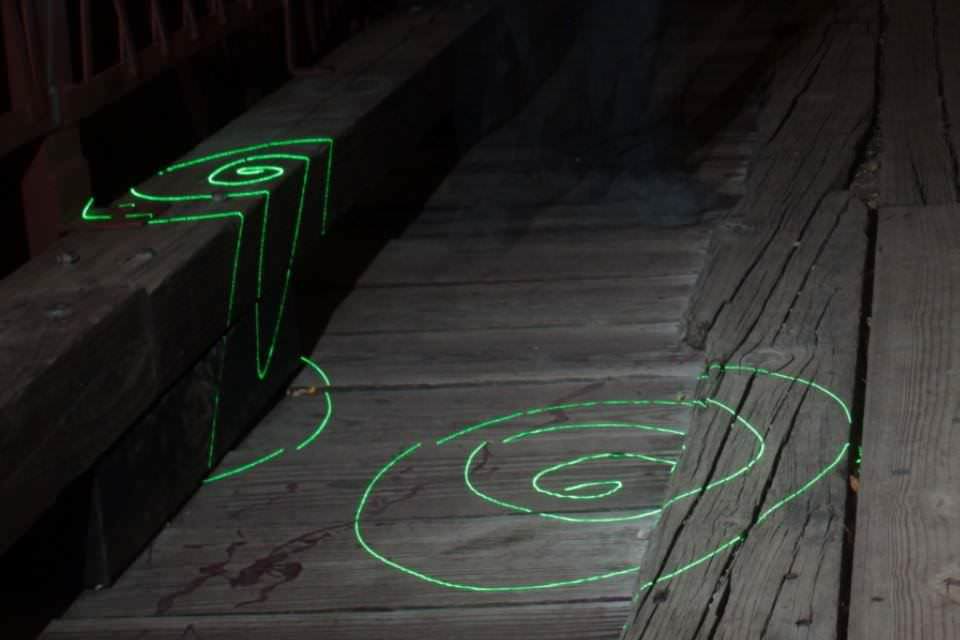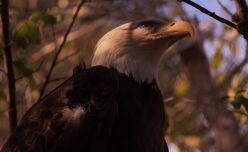
In 2009, a girl I was dating asked if I’d ever heard of a place on the edge of town called Old Alton Bridge, also known as “Goatman’s Bridge.” I hadn’t, so she suggested we visit soon because some local ghost hunters were giving a presentation there. I agreed. One summer day, we drove a few miles from my house to the bridge. It wasn’t remote, but it sat on the outskirts between Denton, TX, and Corinth, TX.
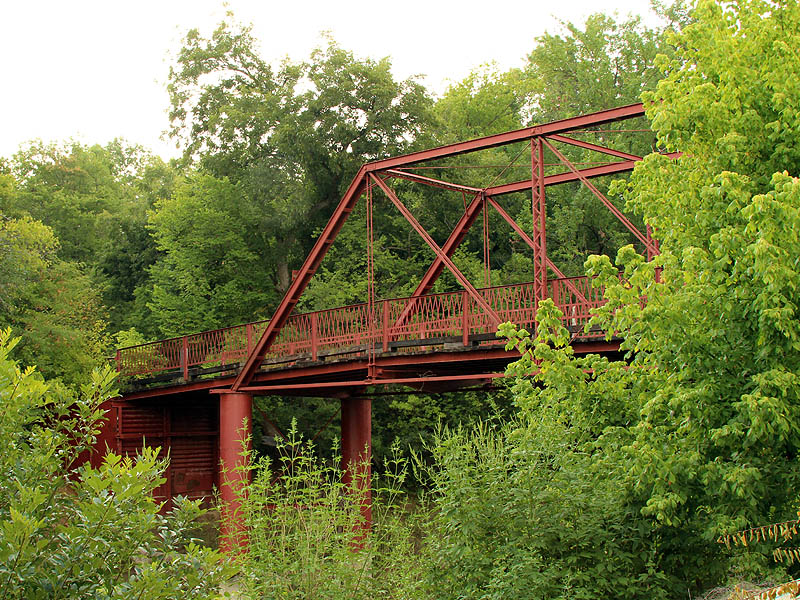
Surprisingly, I’d never been there despite living in Denton over 20 years. We turned onto Old Alton Rd., and just around the corner was a gravel parking lot leading into the forest beside an old iron truss bridge. A few cars were parked, so we joined them and headed down the short path to the bridge. About 100 feet from the lot, three old benches faced a small group with a couple of people standing in front. We stood at the back, listening briefly.
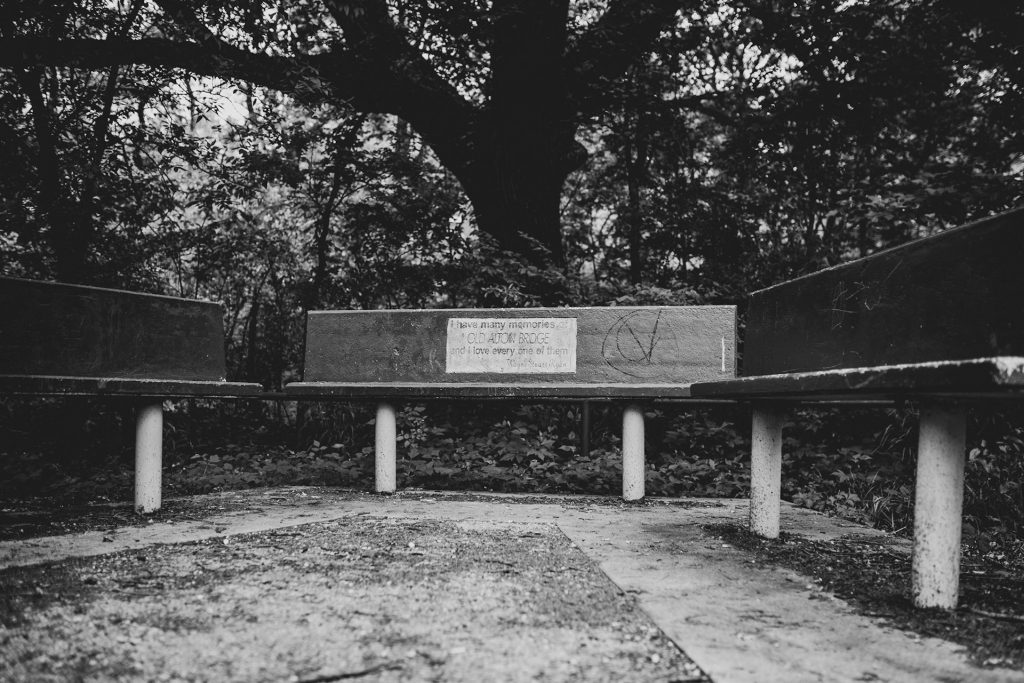
I don’t recall exactly what they said, but my girlfriend and I weren’t very interested, so we continued another 100 feet toward the bridge itself.
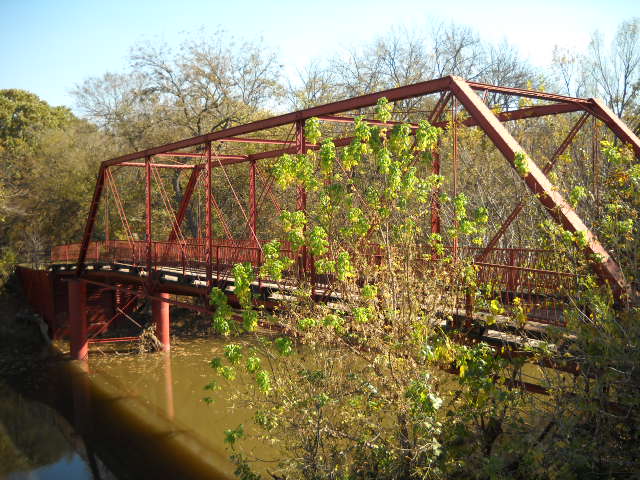
“Wow,” I thought. “I can’t believe I never knew about this place before.” The large historic iron truss bridge overlooked a long river called Hickory Creek. We peered over the side and walked to the bridge’s end where two trails led into the woods along the river. My girlfriend asked if I wanted to explore one of the trails. I agreed, and we headed into the woods.
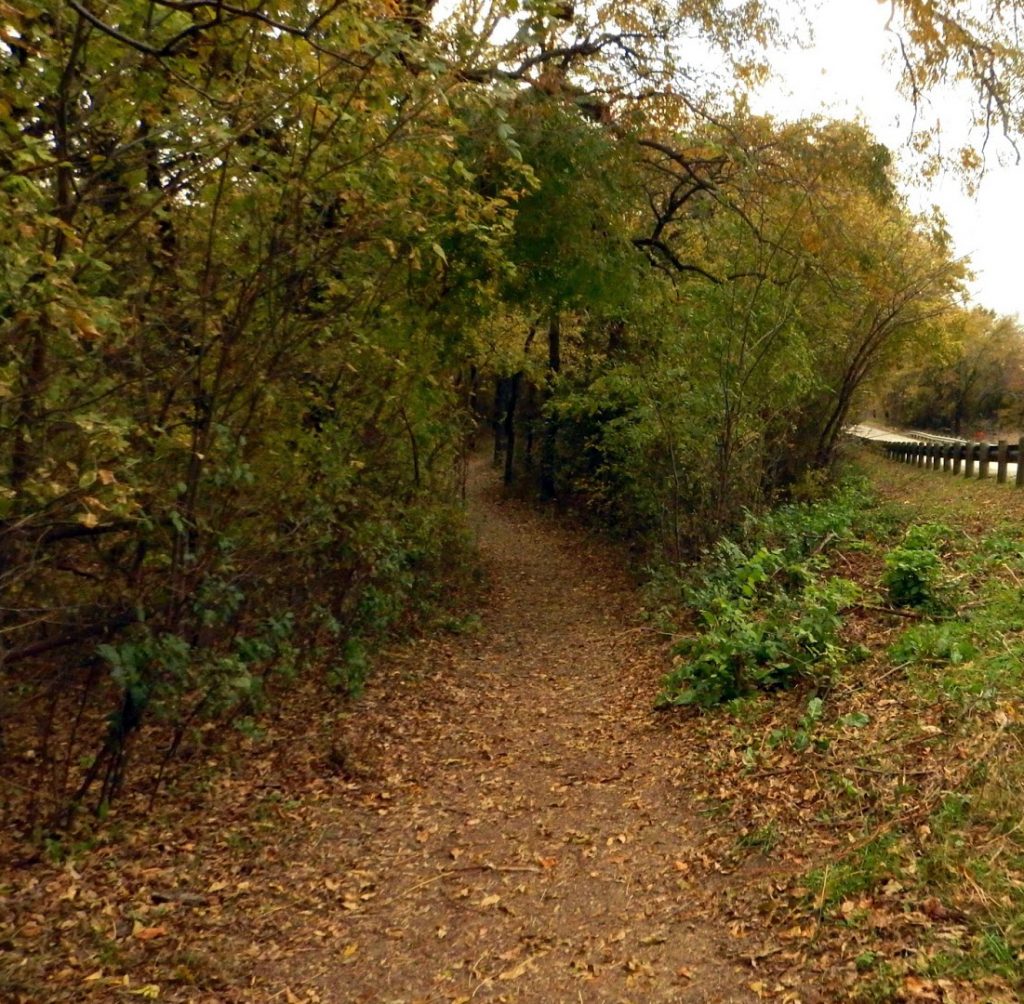
We walked seemingly forever, repeatedly asking, “Does this trail ever end?” For the first half-mile, we could see the road to our right and the river to our left until the trail branched deeper into the forest. We wondered if it looped back or if we’d cross the river. It was hot, and she wore flip-flops that became uncomfortable as the trail grew sandy. She lost her footing briefly and broke a flip-flop. She got frustrated at trying to walk with a broken flip-flop and eventually took it off and threw it into the woods, continuing on barefoot. (Remember this detail—it becomes important later.) We laughed and after awhile we debated turning back, as this trail seemed never-ending and it was hot. After about two miles, we agreed to return. What felt like ages later, we finally reached the bridge, crossed it, and got back in the car. “Well, that was anticlimactic,” we agreed. “I thought it was supposed to be spooky or haunted.” We left and never returned—until about a year later.
A year or two later, on a Halloween night, my best friend at the time, my girlfriend, and I were driving home from a bar. We were all dressed up and unsure of what to do next. I was wearing a black robe similar to those from the Scream movies. I can’t recall what the others were dressed as, but none of us were ready to call it a night. As we drove near the area where I remembered the bridge being, I suggested, “Hey, let’s go to Goatman’s Bridge and smoke a joint underneath it.” My girlfriend and friend hesitated but eventually agreed.
We arrived at the bridge around 11 p.m. There were no cars parked nearby, so we pulled in and made our way over. The place was eerily quiet for Halloween night, almost unsettling in its stillness. I told them I planned to climb down the side at the far end of the bridge to reach the water’s edge and smoke a joint. I invited them to join me, but they both declined. “Suit yourselves. I’ll be back in a bit,” I said. They seemed uneasy, unfamiliar with the spot. My girlfriend had only been there once before with me, and my friend had never visited—now, he definitely didn’t want to be there.

I walked to the end of the bridge, keeping to the side of the road, and carefully made my way through the brush to the area beneath. The slope was steep, but I managed to reach it. It was pitch dark underneath, so I sat down, lit my joint, and sat quietly for a few minutes. Since I didn’t smoke often, the buzz hit me quickly, and I drifted into deep thought. Gazing up at the underside of the bridge, an overwhelming sense told me I shouldn’t be there. I felt eyes on me, so I quickly put out the joint and climbed back up the incline to join my friends.
“Well, how was it down there?” they asked.
“Creepy, but nothing strange happened. Ready to go home?” I replied.
“Definitely, this place gives me the chills,” they said.
We walked a short distance to my car and drove a few miles home. I dropped my friend off, and soon after, my girlfriend and I arrived at my house. As I got out of the car and walked inside, I felt something dripping down my right leg. I took off my robe, rolled up my jeans, and inspected my leg.
“Holy shit!” I exclaimed to my girlfriend. “Look at this!” A huge, bloody gash ran down my leg. It was deep and wide, bleeding heavily but not enough to need stitches. “How did you get that?” she asked, concern in her voice. “Did you fall or get scratched by a tree or something?” “No, not at all,” I replied. Then I rolled my jeans back down and pointed out, “And look—there’s no tear or cut in my jeans where the wound is.” The gash was so large and deep that if I had actually cut myself while wearing the jeans, the fabric would have been ripped.
I grabbed the robe I was wearing and carefully inspected it for any puncture marks but found nothing. “What the heck?” I muttered, then quickly put the robe back on and stood up. “Look!” I patted the leg area where the gash had appeared. There was nothing—no scratches, no tears, no twigs or brush at all. I lifted the robe and checked my pant leg again while standing—still nothing unusual. I rolled the pant leg back down, glanced at the gash, and then looked at my girlfriend. “How on earth did I get this?” I asked. “This is really strange.” “Yeah, that’s definitely odd,” she replied.
I cleaned the gash and bandaged my leg, then we went to sleep. All night, I kept wondering where the wound had come from—how it appeared through two layers of clothing without piercing either one, and when it had happened. The eerie sensation I felt sitting beneath the bridge haunted me. Fear and paranoia overwhelmed me, making it clear I absolutely should not have been there. Being on the bridge was one thing, but as soon as I went underneath, that unsettling feeling took hold.
I dismissed it as one of those strange, unexplainable spooky events that defy understanding. The next day, I shared the experience with my family and carried on with my life, rarely giving it much thought afterward.
Around this time, I began attending film school. I had always been passionate about photography and dreamed of becoming a film director one day. When I was younger, I struggled to focus in school, and nothing truly captured my interest until the year my mother bought me my first camera. It was a Nikon point-and-shoot with multiple settings, resembling a DSLR. I had been attending community college, uncertain about my future, and unsure of which path to take. I withdrew from high school in my junior year and switched to homeschooling, eventually earning my GED. After taking the SAT and ACT, I applied to the University of North Texas, having heard great things about their film program, RTVF (Radio, Television, and Film). Unfortunately, despite my high scores, their policy required near-perfect test results from GED students, so I was not accepted. This setback was discouraging, but I refused to give up. One day, I happened to hear a radio ad for The Art Institute of Dallas. Intrigued, I visited their website and requested information, then forgot about it until several months later.
One day, I received a phone call from an unfamiliar number and let it go to voicemail. Later, I checked the message and discovered it was a recruiter from the school responding to my inquiry. Intrigued, yet being a major procrastinator, I didn’t return the call and carried on with my life. About a month later, while on a food run for my coworkers, I received another call from an unknown number. This time, I answered and recognized the friendly voice—it was the same woman who had left the voicemail a month earlier. We chatted briefly, and I apologized for not getting back to her sooner. She asked if there was a convenient time for me to come in and talk. Since I lived in Denton, about 45 minutes from Dallas, we agreed on a day a few weeks ahead when my mother and I would drive up to meet her and tour the school. When the day arrived, I was nervous but excited. The building was impressive, and during the tour, they showed me classrooms equipped with large, top-of-the-line iMacs at every seat. They proudly demonstrated their state-of-the-art equipment and took us to the equipment room, where they explained I could rent film and audio gear for projects anytime. She also assured me that before graduating, I would be placed in my chosen career field. I was genuinely impressed and felt certain this was where I belonged. I had finally found my calling, so I enrolled and started in 2010, majoring in Digital Filmmaking and Video Production.
A few months later, I reached out to my friend who had joined me at the bridge that Halloween night, and we decided to hang out one afternoon. “I want to record something cool with this new camera I got. Let’s go back to that bridge we visited,” I suggested. He agreed, and we headed there. We arrived a few hours before sunset and took the opposite trail from the one my girlfriend and I had walked years earlier.

At first, nothing seemed unusual, but the trail soon branched into several paths leading deep into the woods. We explored a bit, and I captured some interesting shots on film.
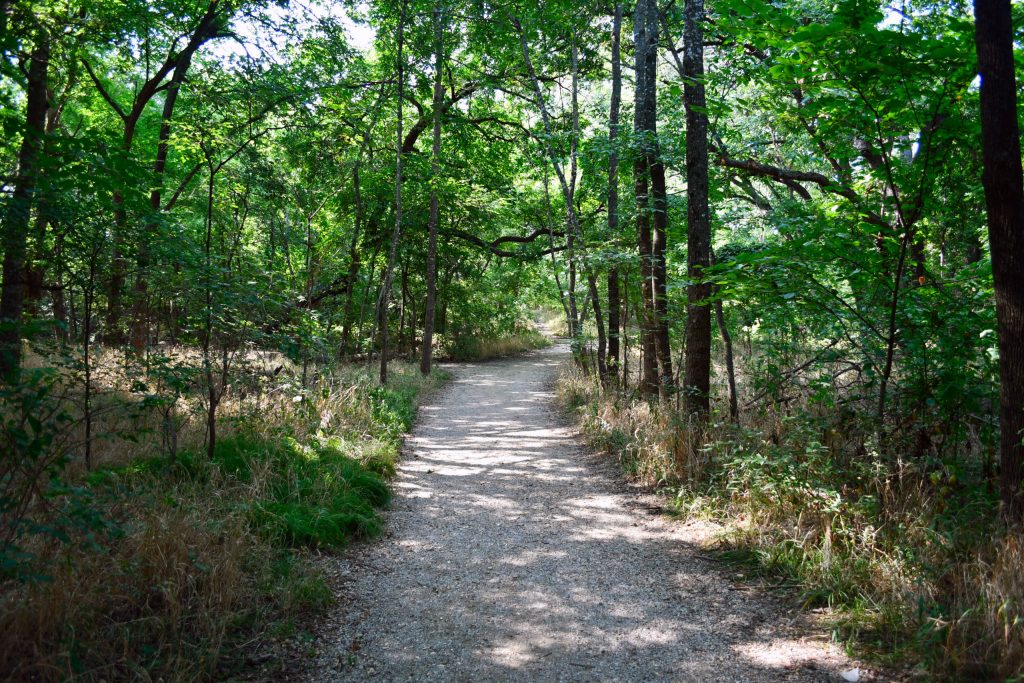
Down one path, we thought we heard a noise. My friend got nervous and didn’t want to proceed, so we turned back toward the car. It was still daylight, so I kept filming. We paused and looked into the distance, where we thought we heard another noise. My friend got spooked again, and we started running back to the car. In the chaos, I lost the lens cap to my brand-new Nikon camera, (Remember this detail along with the broken flip-flop—it becomes important later.) but I swear I caught something on film. When I got home, I reviewed the footage frame by frame. It might have been nothing, but there was a strange shape in one frame as we turned to run—it looked like a person. It could’ve been a person or just a leaf. Either way, I was thrilled by it, and we shared the quirky experience with several people. (Looking back, I was so innocent then!)
I never gave it much thought and simply went through my college experience. During my second semester, I enrolled in my first Photography class, eagerly anticipating what I’d learn. However, the camera I owned was a basic “point and shoot,” while the class required a DSLR with manual controls. Although I could have rented one from the equipment room, I chose to buy my first DSLR—a Canon Rebel.
I quickly learned how to use manual settings: adjusting exposure, ISO, aperture, and shutter speed based on the scene. This was a turning point for me. When my teacher showed me how to take a “long exposure” photo, I immediately dove into experimenting.
A long exposure photo involves leaving the shutter open for several seconds in low-light conditions. A tripod is essential since holding the camera steady by hand for anything slower than 1/60th of a second usually results in blur. On bright sunny days, a high shutter speed can freeze motion perfectly, capturing even moving water crystal clear. Conversely, a slow shutter speed can brighten dark scenes dramatically.

I became particularly fascinated with long exposures after my teacher demonstrated how to create a silhouette. The process involved being in a dark room, setting the shutter to around 8 seconds, and standing in front of the camera as it took the photo. After a few seconds, you step out of frame, quickly flash a light where you were standing for a brief moment, and then let the camera finish capturing the image. With some trial and error, the result is a photo showing your shadow as a silhouette while your body disappears. I found this technique fascinating and spent a lot of my free time at home experimenting with it.

I taught myself countless techniques with long exposure photography. For instance, if you stand still in the dark and briefly flash a flashlight on your face, then move your head and repeat the process a few times before sitting still again, you create an incredible image of yourself with three heads, like a modern Cerberus. I also mastered the silhouette method and took it further to make your body appear translucent. For example, by setting the shutter speed to 15 seconds and standing in front of the camera for only half the exposure time, then stepping away to let the camera finish capturing the scene, you get a ghostly, semi-transparent figure.
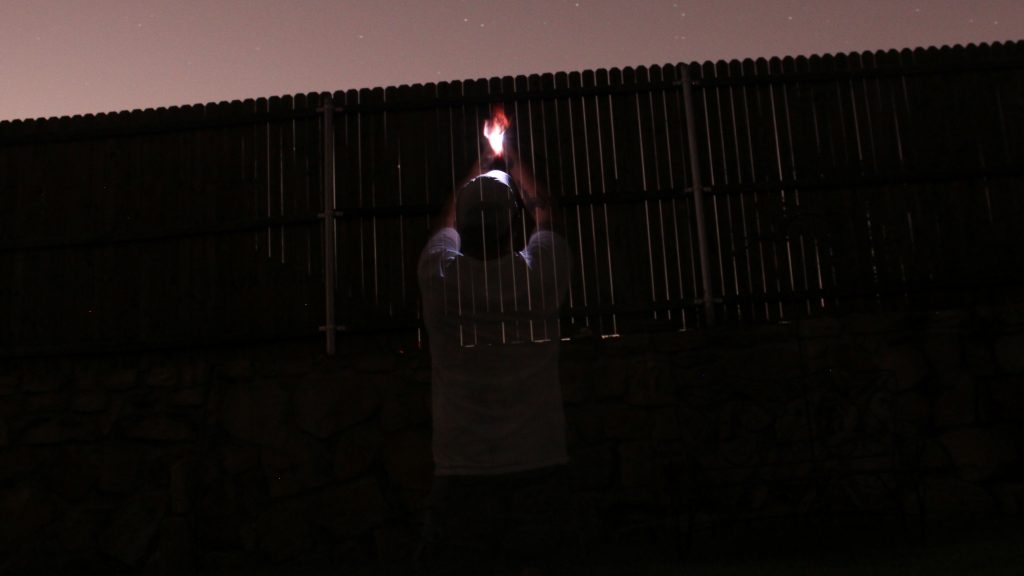
The creative possibilities with long exposure are truly endless. I began experimenting with all sorts of LED lights and lighters. Setting the shutter speed to around 20 seconds, I would ignite a lighter near my face, move to another spot and do it again, continuing this around the frame. Then, I might stand in the center, illuminated or just still. The resulting photos often showed me as a ghostly figure surrounded by multiple floating heads. I produced some of my most striking images without ever using Photoshop or any editing software.

Unfortunately, many viewers assumed these effects were digital edits, but to this day, I have never altered a long exposure photo. I’ve taken probably half a million shots simply by visualizing the end result and experimenting in the dark to see what works. One of my favorite techniques was “drawing” with light. Setting the exposure to about 30 seconds, I would use any LED light or lighter to paint shapes and designs in the darkness. This technique, known as “light painting,” allows you to create virtually anything you imagine — and I truly embraced that freedom.
Around this time, I also became captivated by stop-motion photography. I watched a video called “Her Morning Elegance” by Oren Lavie and thought, “I want to create something like that!” So I started experimenting. I grabbed anything that could move—my niece and nephews’ toys, action figures, fridge magnets, anything I could find. I would take a photo, move the object slightly, take another photo, move it again, and repeat. Of course, this always required a tripod. I remember my very first stop-motion project was simply stacking 10 pennies on top of each other. It was terrible. The second was a humorous short clip of my nephew’s toy cars zooming, chasing, and crashing around the kitchen. It was basic and far from perfect, but it was a lot of fun.
My third stop-motion video was simple yet spectacular. It was one of the first videos I uploaded to my new YouTube channel back then, Shoeshine29. Titled Thriller – Stopmotion, I studied the dance moves from Michael Jackson’s iconic Thriller music video. My mother had two fridge magnets we bought in Vegas—one a skeleton, the other Bob Marley. They had magnets on their bodies, hands, and feet, connected by strings so they could be posed. I must have taken thousands of photos for that video, but it was thrilling to watch these little fridge magnet figures come to life on the fridge, performing the Thriller dance in sync with the song itself. This was in YouTube’s early days, so I wasn’t hit with any copyright strikes. I spent hours experimenting with stop-motion, creating scenes from my imagination, snapping thousands of photos, then importing them into Windows Movie Maker. I’d select all the photos, set the duration to 0.02 seconds, add a song, and export it—rarely rearranging anything—and I was always amazed by the results. Below is a screenshot from the old channel archived in theThe Wayback Machine.

I became completely absorbed by the process—crafting something from nothing, bringing the lifeless to vibrant existence. Stop-motion animation, however, was limited to daylight hours. At night, a different world opened up: long-exposure photography. One night, while spending hours capturing long-exposure shots in my backyard, I held down the scroll button on my camera and rapidly flipped through the images. My camera could only auto-capture 10 photos at a time, so I set the timer, struck a pose at each beep, and painted with light until the next signal. As I scrolled through the sequence, I realized, “I can merge these two passions.” The rapid sequence looked like chaotic, otherworldly scenes unfolding across my backyard—madness from another dimension, yet strangely mesmerizing. This sparked a new creative venture: blending stop-motion with light-painting, which I called “Light-Motion Photography.” I hadn’t seen anyone else doing this, but my skills in long-exposure photography were growing, allowing me to conjure visions in the dark beyond imagination. Energized, I began mentally planning my next set of 10 shots.
I set the timer and took my position. Beep, beep, BEEP. I stood perfectly still, arms outstretched. BEEP. I lit both lighters, released them, and remained motionless. BEEP. Lighting the lighters again in the same pose, I raised my arms slightly, then let go and held steady. BEEP. I repeated, lifting my arms a bit higher each time until they reached above my head. I returned to the camera and reset the timer. Beep, beep, BEEP. Starting with my hands raised in the final position, I briefly lit the lighters. BEEP. I followed the same steps in reverse, lowering my arms incrementally. After 20 shots, I reviewed them, scrolling quickly through the images. There I was—sharp and in focus—in the darkness, waving fiery, ethereal wings. My arms seemed to move through different dimensions. The scene was breathtaking, surreal. The best part? I hadn’t edited a single photo. I discarded only those that were overexposed or unsatisfactory, but every other image was a pure creation thought of in that very moment, brought vividly to life in the dark.
Some of my most exciting creations involved Christmas lights, especially the hanging icicle-style string lights. When spun around and captured in a long-exposure photo, they looked like a galaxy hovering above my head. One of my favorite videos on YouTube is titled “A Trans-Siberian Christmas Stop-motion.” I spent about six hours one night in the backyard during the Christmas season, taking long-exposure photos. This project had everything: the house was adorned with Christmas lights, the blinds were closed with indoor lights off, then opened and closed in sync with “Carol of The Bells” by the Trans-Siberian Orchestra. Each room lit up at different intervals, and candles appeared one by one, moving into the frame, lighting and extinguishing to the rhythm. I spun the Christmas lights wildly around the yard, matching the song’s beat, while the camera panned between three positions for panoramic stitching. The slow movement of stars in the sky behind my house showed just how long I’d been out there creating this video. Even my best friend Dexter, my Beagle, made an appearance!
There was a moment when I grabbed both ends of my thick jacket, tore it open to reveal the sweater underneath, puffed out my chest, and tossed a ball of Christmas lights in an arc away from my chest to the ground. The final image looked like fireworks bursting from my chest. I also “wrote” in the air: “Baby you’re a FIREWORK” followed by “Katy Perry ain’t got nothing on ME!” When I say “wrote,” I’d recently discovered an incredible app, which unfortunately I don’t remember the name of and suspect no longer exists. It was a dream tool for any light-painting enthusiast—simple, easy to learn but challenging to master. You typed whatever text you wanted, chose the direction for it to move (left to right or right to left), set the exposure duration, and picked the text color. For example, I’d input “Baby you’re a FIREWORK,” select “left to right,” a “15-second exposure,” and white text color. Then, setting my camera to a 15-second exposure, I’d press the shutter, start the app’s “Begin” button, and slowly pan my phone across the frame like wiping a window, matching the camera’s exposure time. Move too fast and the text appeared too small; too slow and it stretched out too much. It took many trials to perfect, but it was one of the coolest discoveries I ever made.
Below is the only remaining example I have, taken much later in the story, which we’ll get to shortly.

It was strange to watch. If you simply clicked “begin” and stared at the phone screen, nothing seemed to be happening. It appeared as a long, thin cylindrical shape swirling in the center—like a barber pole spinning so fast with shifting patterns that it was hard to tell what you were seeing. That video received a lot of positive feedback on YouTube, and one comment in particular changed the direction of my journey. A user wrote, “That’s cool, it looks like Steel Wool Poi.” I replied, “Poi? What’s that?” They sent me a link to a Steel Wool Poi video, which I watched and instantly responded, “I NEED THAT IN MY LIFE RIGHT NOW!” I would go on to teach myself Steel Wool Poi and eventually learn to Spin Fire—both of which we’ll explore later, as they play a crucial role in this journey.

Almost every night, after everyone had gone to sleep, I would be outside with my dog and my camera, immersed in the pitch-black night. I crafted masterful artwork, explored new techniques, and dreamed up even more ambitious and intricate ideas.
During this time, Dexter and I grew incredibly close—he became my loyal companion and creative partner. One of my favorite videos was titled “Go Ask Dexter,” described as “…when he’s 10 feet small,” set to a rock/EDM remix of the song “White Rabbit.” Dexter’s intelligence made him the perfect subject for these imaginative projects.

We had a large wooden doghouse that he never really used since he was an indoor dog, but he absolutely loved lying on top of it to sunbathe—just like Snoopy the Beagle!
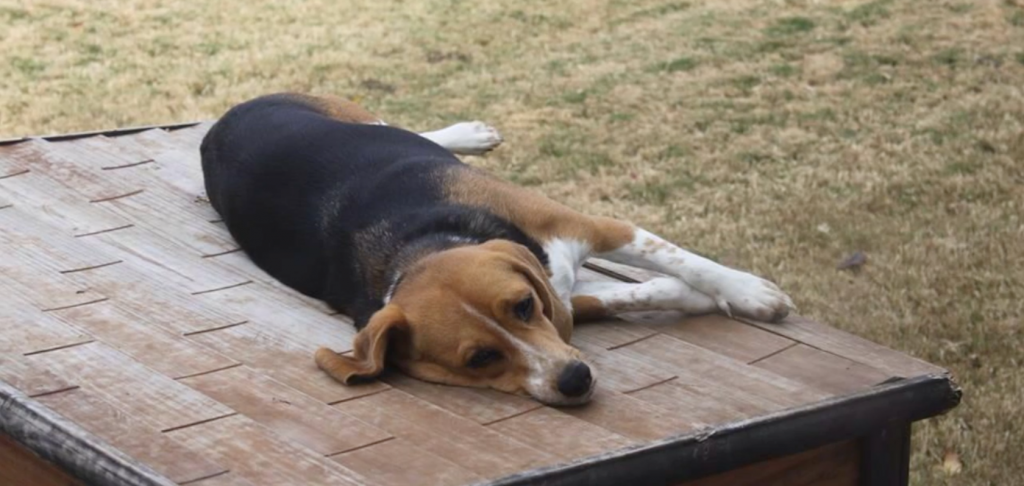
I positioned the camera one night facing the doghouse and had Dexter sit in the entryway. I would start the long-exposure shot and give him the “Wait” hand signal, as he sit perfectly still for about 8 seconds then lowered my hand which was the “Come” signal, and he would come out of the frame as the camera finished taking the photo. The end result was a beautiful translucent outline of him. He looked like a ghost dog!


One shot was absolutely breathtaking when I gave him the hand signal to sit, then the signal to lie down, followed by the cue to rest his head between his front legs and wait. He held this pose for about six seconds until I signaled “Up” to raise his head, and moments later, the command to “Come,” prompting him to leave the frame for his treat. The result was stunning: the lower half of his body appeared solid and fully visible, while the upper half gradually became translucent, as if he was vanishing before your eyes. Every image was crystal clear and perfectly focused, truly mesmerizing. When arranged sequentially to match the rhythm of the song in a stop-motion style video, it seemed as though he was dancing to the beat, fading in and out of dimensions right before your eyes. Additionally, I periodically rotated the camera and captured photos in different locations using the same technique, enhancing the effect even further.
The only editing I ever did was occasionally using a program called Microsoft Image Composite Editor (ICE) to stitch panoramic images. Most of the time, it stitched them automatically with impressive accuracy. Through extensive experimenting with panoramas, I discovered that if a subject appears in one third of the frame in one image and in the opposite third in the next, the software stitches them together automatically, resulting in a photo where the subject is effectively cloned. So, while Dexter was in the doghouse, he also appeared sitting in the chair beside it. As the camera rotated further, he could also be seen sitting on the table next to the chair. Panning in one-third increments produced wildly creative results, especially when combined with long-exposure photography and light painting in a stop-motion style!
Here is a still from a video I created titled “Who Let My Dogs Out.” It was made from 10 photos facing the left third of the fence, 10 photos of the center third, and 10 photos of the right third. I stitched these in various combinations, resulting in about 100 different images arranged to the rhythm of the song “Who Let the Dogs Out.” Dexter and his “clones” appeared to be dancing to the beat, which was absolutely adorable. This project was surprisingly simple to execute. Dexter sat in each position and, at my signal to “Come,” ran toward the camera as I snapped 10 high shutter-speed photos.

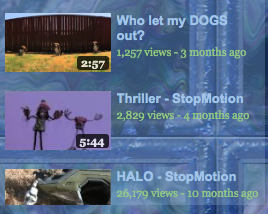

Dexter cherished every moment, driven by his love for treats and his joy in watching me work. From the start, he seemed to grasp the essence of the camera and how it functioned. I took him with me everywhere. Together, we embarked on countless adventures, and in his nearly 15 years, Dexter experienced more of life than most could in a hundred lifetimes. He played a vital role in my awakening, a journey that eventually led me to uncover the deeper Truth of Reality—a topic we will explore in much greater detail as we continue.
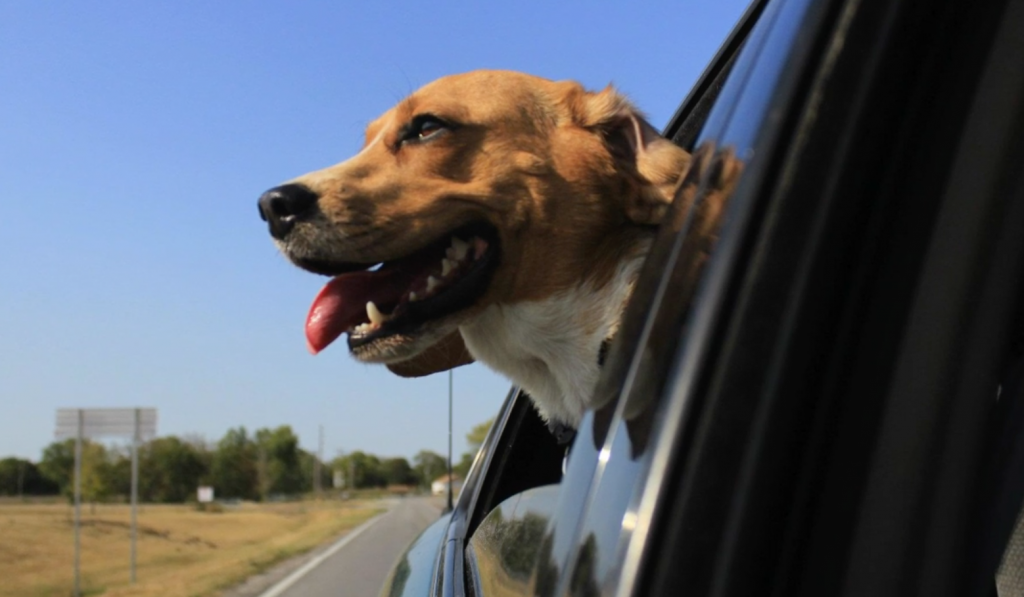
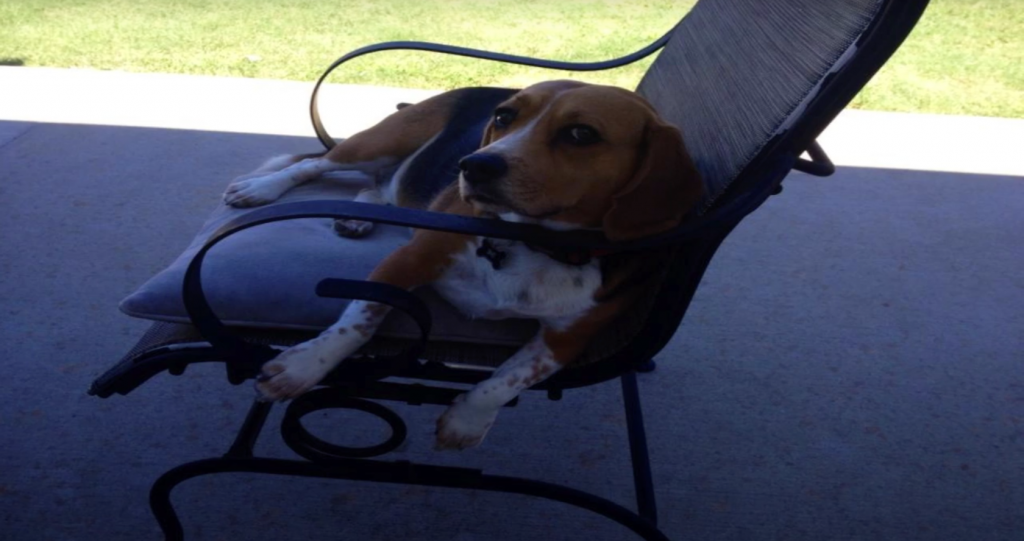



Dexter is one of the few names that will NOT be changed to protect privacy throughout all this , as you will eventually notice I do with many KEY individuals. I would LOVE to share the names of ALL involved, but out of respect for their wish to remain anonymous and attempt to live a nice, quiet life, many will have pseudonyms sadly. Even if one was a Witch who’s name rhymes with Claire. Dexter and I however…..will NOT. We do not care.

Dexter has been, is, and will always be my best friend in the entire universe. Across every dimension of consciousness, existence, and level of awareness—through this life, the past thousand, and the next ten thousand—until the end of all that is and all that can be, “Dexter The Perplexer” remains my one true soulmate. I would not be who I am today without him. It is written in the cosmos.
The Pillars of Creation
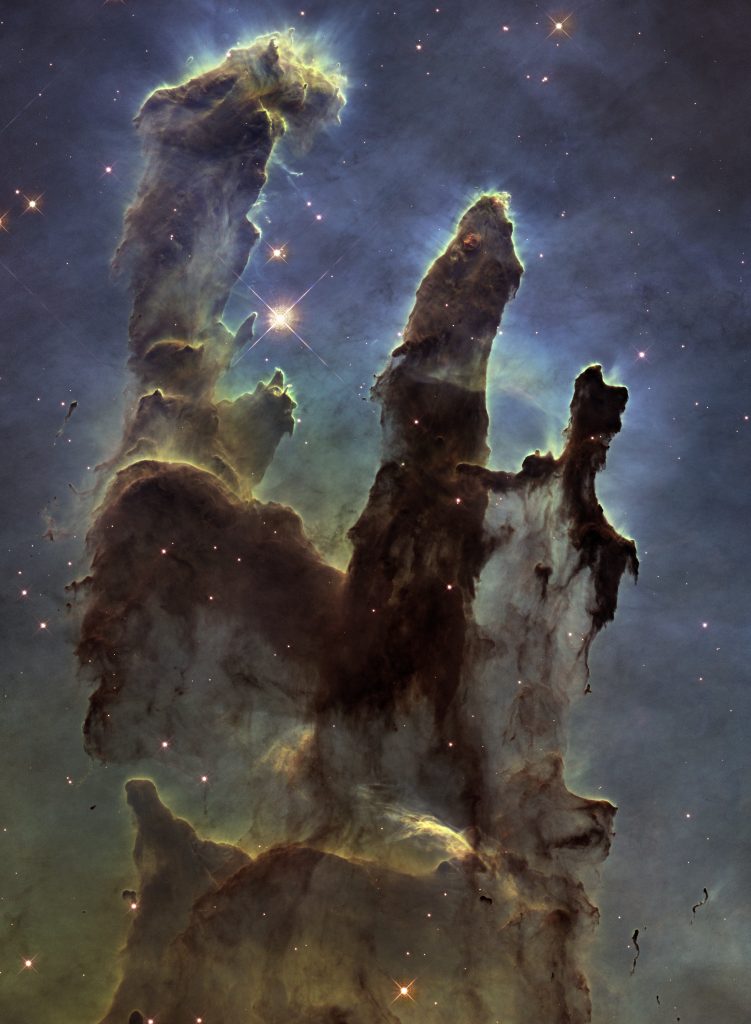
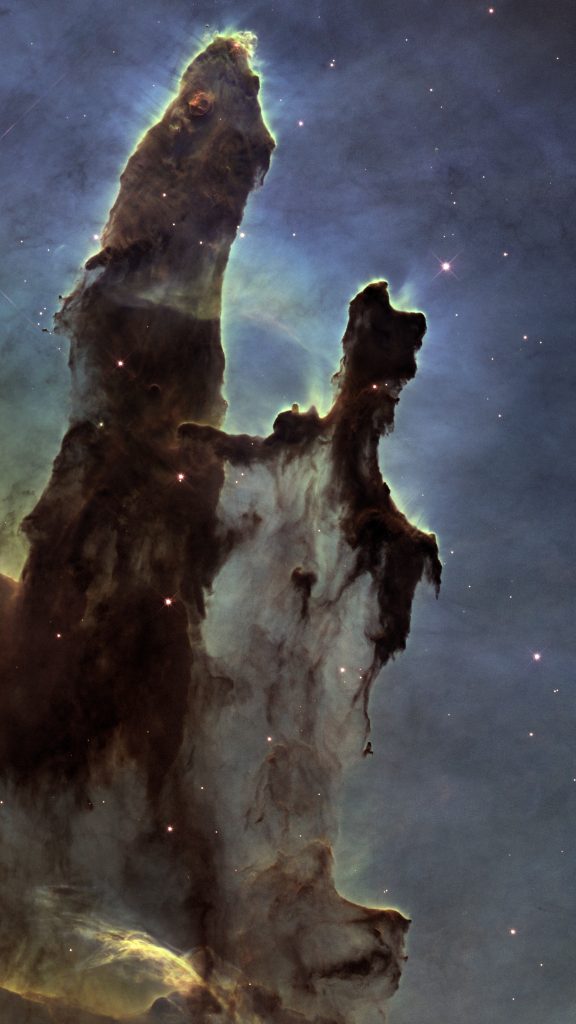

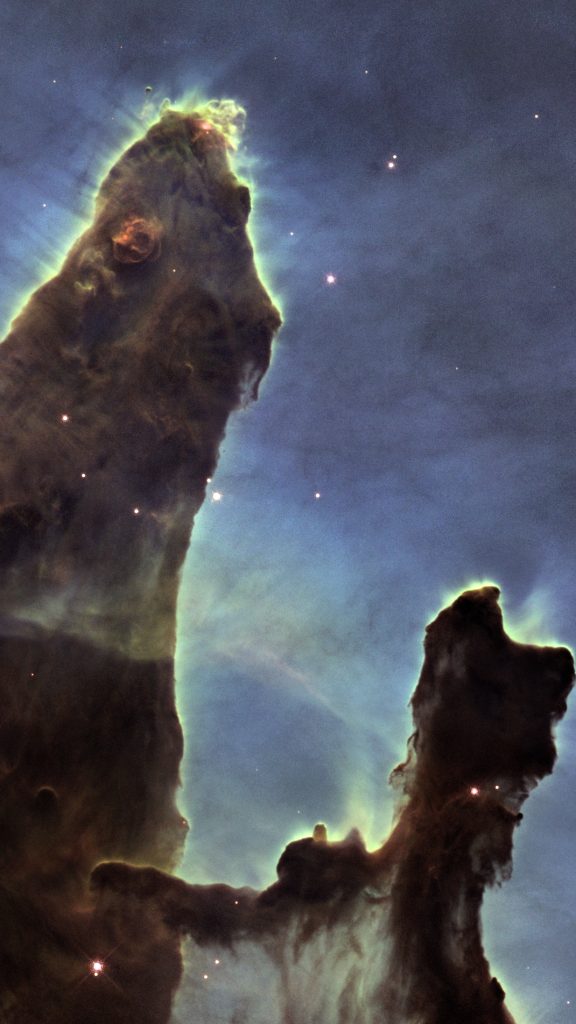


“To B the Eagle, Breathe like a Beagle.“
Fly High Dexter
2008 – 2022
Dexter passed away after battling kidney failure on September 20, 2022 .
He did not suffer, but the last week of his life really was very traumatic and unexpected for all who loved him.
Below is a poem my mother gave to me
“If it should be that I grow frail and weak
And pain should keep me from my sleep,
Then will you do what must be done,
For this — the last battle — can’t be won.
You will be sad I understand,
But don’t let grief then stay your hand,
For on this day, more than the rest,
Your love and friendship must stand the test.
We have had so many happy years,
You wouldn’t want me to suffer so.
When the time comes, please, let me go.
Take me to where to my needs they’ll tend,
Only, stay with me till the end
And hold me firm and speak to me
Until my eyes no longer see.
I know in time you will agree
It is a kindness you do to me.
Although my tail its last has waved,
From pain and suffering I have been saved.
Don’t grieve that it must be you
Who has to decide this thing to do;
We’ve been so close — we two — these years,
Don’t let your heart hold any tears.
I lost a treasured friend today
The little dog who used to lay
His gentle head upon my knee
And shared his silent thoughts with me.
He’ll come no longer to my call
Retrieve no more his favorite ball
A voice far greater than my own
Has called him to his golden throne.
Although my eyes are filled with tears
I thank him for the happy years
He let him spend down here with me
And for his love and loyalty.
When it is time for me to go
And join him there, this much I know
I shall not fear the transient dark
For he will greet me with a bark.
They will not go quietly,
the pets who’ve shared our lives.
In subtle ways they let us know
their spirit still survives.
Old habits still can make us think
we hear them at the door
Or step back when we drop
a tasty morsel on the floor.
Our feet still go around the place
the food dish used to be,
And, sometimes, coming home at night,
we miss them terribly.
And although time may bring new friends
and a new food dish to fill,
That one place in our hearts
belongs to them…
and always will.
I was just a pup when we first met, I loved you from the start
You picked me up and took me home and placed me in your heart
Good times we had together, we shared all life could throw
But years past all too quickly, my time has come to go
I know how much you miss me, I know your heart is sore
I see the tears that fall, when I’m not waiting at the door
You always did your best for me, your love was plain to see
For even though it broke your heart, you set my spirit free
So please be brave without me, one day we’ll meet once more
For when you’re called to Heaven, I’ll be waiting at the door.”
Love, Dexter
Dexter The Perplexer uploaded Dec. 24, 2015



One of my favorite videos from that time was titled “Ghost Shoes – LightMotion.” I took the silhouette technique I mentioned earlier and combined it with some painstaking experimental methods. One night, I set up my camera on the back porch, facing the yard with a wide shot. I placed both of my shoes side by side on the patio within the frame, set the camera to a 15-second exposure, and stood next to the shoes with one foot on each side. I remained still for about seven seconds, then stepped out of the frame and briefly shined a light toward where I had been standing. As the exposure continued, the resulting image showed a pair of shoes on the patio casting a long shadow stretching along the side wall of my house into the distance.
Picture a person standing in a dimly lit backyard, with a single patio light behind them, looking off at their elongated shadow. Normally, your shadow stretches outward from your feet to your head. But what if that exact shadow appeared to start from just a pair of shoes, with no body casting it? Now imagine those shoes beginning to walk across the patio and into the yard on their own, legs moving and the shadow trailing behind. Then, those shoes wander throughout the yard before stopping to face the camera. Suddenly, the long shadow shrinks smaller and smaller until it vanishes into the shoes. Next, imagine the shoes transforming into a fiery figure that moves around once again. That was the essence of my “Ghost Shoes – LightMotion” creation.
I’m very fond of that video and wish I still had access to it. All the screenshots you see here come from the only known record of Shoeshine29’s existence—the Wayback Machine, an internet archive that captured eight screenshots of my channel over a year at various stages. Unfortunately, no videos can be viewed or recovered, and the channel itself no longer exists, nor does the email registered to it or the backup channel I created.
We’ll get to the story of what happened and why I lost access to a YouTube channel that was growing exponentially—from 100 followers to 1,000, then 10,000, 35,000, and finally 120,000. Now, there are zero followers and no record of its existence. Rest assured, an entire segment of this book will be dedicated to explaining that mystery as we move forward.

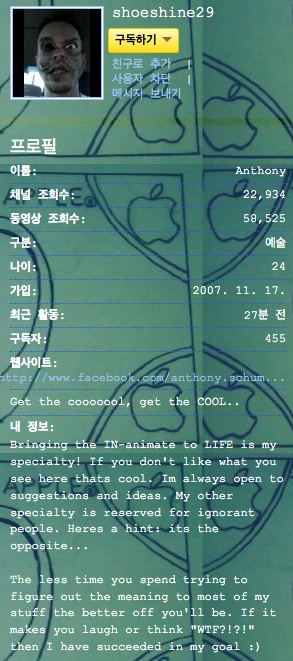



Back to the “Ghost Shoes”—creating that was truly a memorable experience. No Adobe Photoshop. No Adobe After Effects. No rearranging or altering the photo sequence. The idea simply came to me, and once I started, I didn’t stop or review the images until I reached a natural stopping point and thought, “That’s perfect.” I placed the photos on the video timeline, extended the original photo to about five seconds so viewers could fully appreciate its uniqueness, then shortened the duration of the remaining photos to 0.02 seconds each. I added a creepy soundtrack, hit Export, and that was it.

After several months, I decided it was time to get out into nature and capture some stunning long-exposure photos. I asked myself, “Where would be the perfect spot?” I had spent way too much time in my backyard creating wild videos and craved something truly creative. One evening, I chose to visit the bridge. Armed with my camera, tripod, a blue LED light, and my dog Dexter, we set off for Old Alton Bridge—my first solo trip there. I thought to myself, “I don’t understand why people find this place spooky or haunted. The idea of a ‘Goatman’ seems like a myth.” There’s hardly any information about it online, and almost nothing on YouTube except a single video from a small channel called SilkOlive. Take note of the upload date in the screenshot below—it will become very important soon. Scroll down a bit further on this page to watch the actual video.

The Video
This video would soon quickly become a powerful catalyst, igniting a series of events that would change everything in unimaginable ways. It marks the very first mention of anyone named “Oscar Washburn” on the internet and sparked a fire deep within my soul that would burn for many years to come.
But for now, let’s unwind and revisit that unforgettable night. One evening as we arrived, an idea struck me: “Let’s create our own Goatman!” I set up my camera, lowered the exposure, and pulled out my blue LED light to trace the outline of a person standing on the bridge. Needless to say, I was thrilled with the results. “Wow, this is amazing! I think I’m going to love shooting long-exposure here. This might become my new favorite spot,” I thought. “This place is actually pretty peaceful and chill. Come on, Dexter, let’s explore the trails! It’s just an old bridge……..right?”
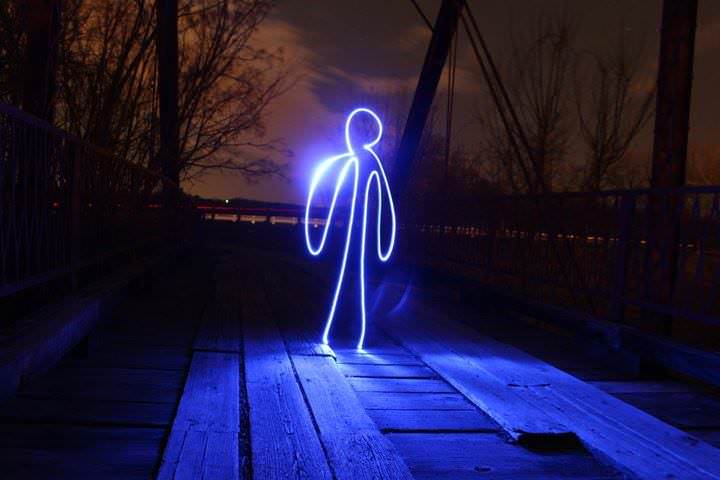
Not for long…

